Thaddeus Kościuszko Virtual Walking Tour
May 2021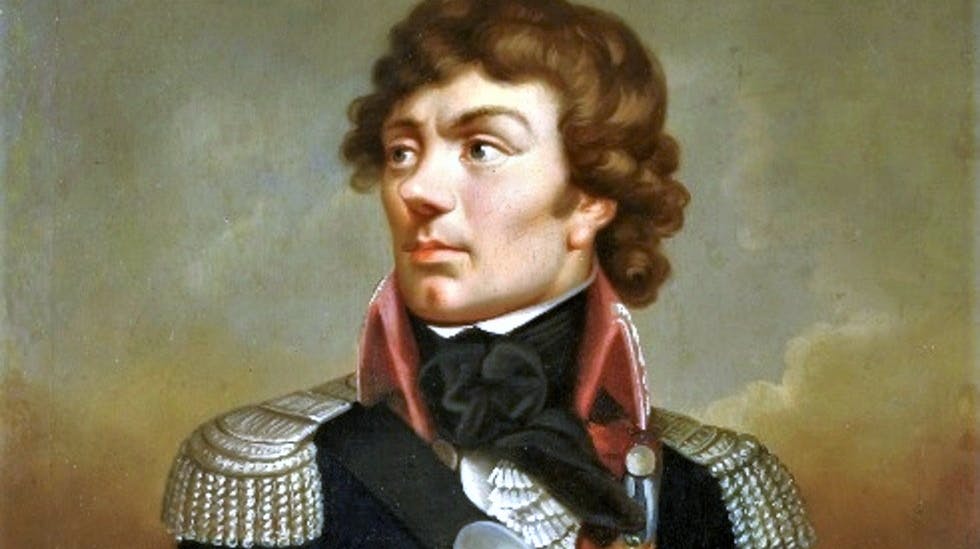
Thaddeus Kościuszko is one of Poland’s most famous national heroes. Though his contributions to the American Revolution are not as well known, his skills as an engineer and passion for liberty and equality led many of his fellow revolutionaries to consider him, along with the Marquis de Lafayette, one of America’s founding cousins. You can even find his influence and presence right here in the Philadelphia area today!
Who Was Thaddeus Kościuszko?
Thaddeus Kościuszko was born in 1746 near present-day Belarus, Poland, to a modest family of noble origins. When he was 19, he began attending the Royal Military Academy in Warsaw, where he excelled in his studies and caught the attention of the Polish monarch. King Stanislaw arranged for a scholarship to send Kościuszko to the Royal Academy of Painting and Sculpture at the age of 23 to study architecture, art, and engineering for several years. While there, Kościuszko was immersed in the ideas and philosophies of the Enlightenment, which advocated for rationality, individual liberty, and freedom of expression. It was this philosophy and its ideals that would influence him for the rest of his life.

In 1776, after completing his studies in Paris, he was looking for employment and heard that the American colonists had rebelled against the British crown and needed engineers. Kościuszko immediately set sail across the Atlantic, headed to Philadelphia.
Thaddeus: The Civil Engineer
In August of 1776, Kościuszko arrived in Philadelphia, seeking to offer his services to the American colonies. With a recommendation from Benjamin Franklin, he applied to the Continental Congress to be a civil engineer. He was quickly given the rank of colonel, and his first assignment was in Paulsboro, New Jersey, just a few miles south of Philadelphia. He was asked to create and construct a series of blockades and defenses along the Delaware River to prevent British forces from overtaking Philadelphia. He first designed Fort Billingsport and then Fort Mercer, both on the Delaware River’s shore, approximately across from where the Philadelphia International Airport is today.
Fort Billingsport & Fort Mercer
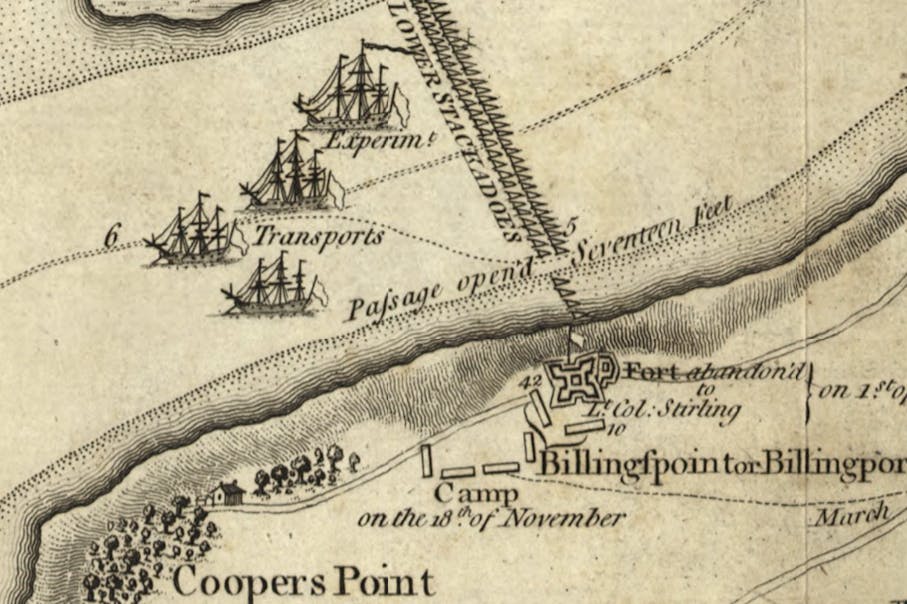
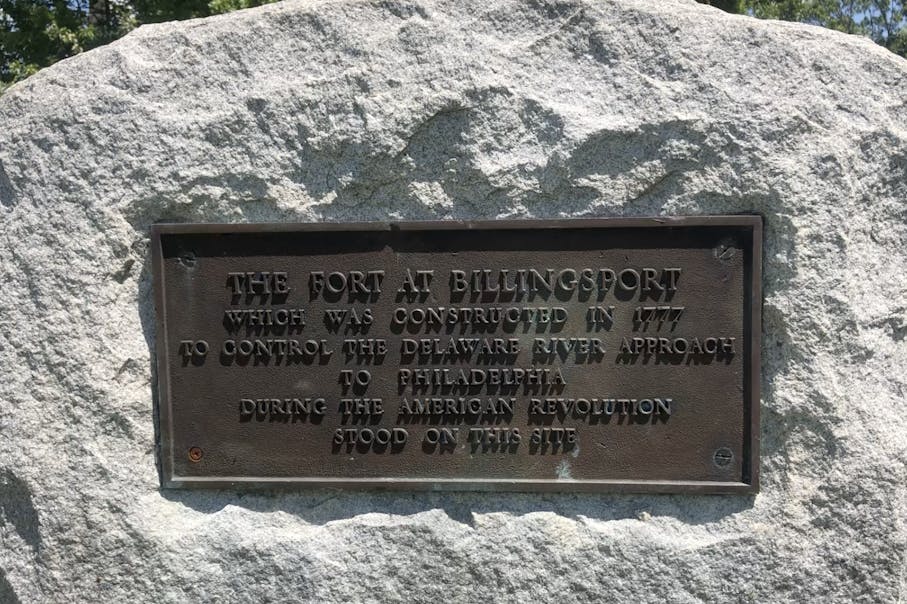
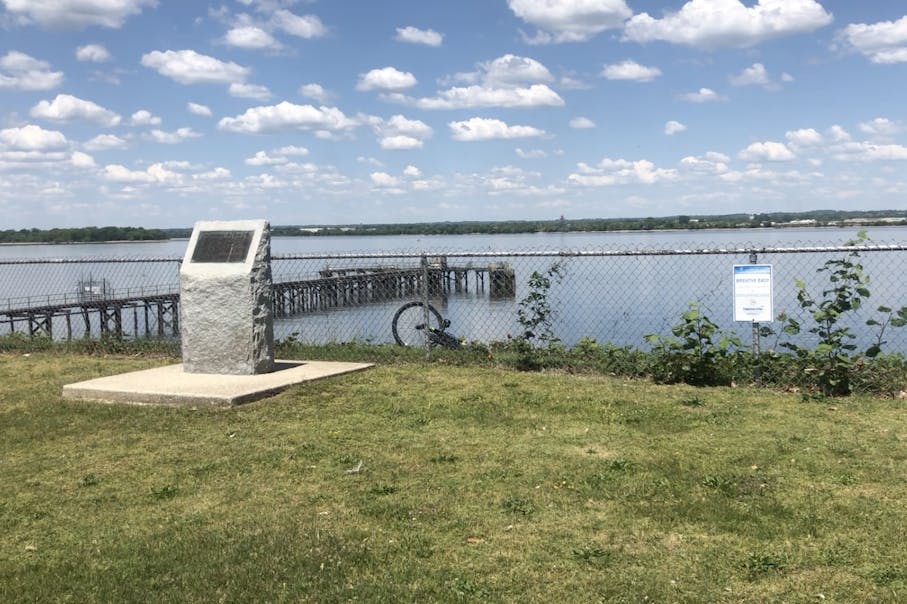
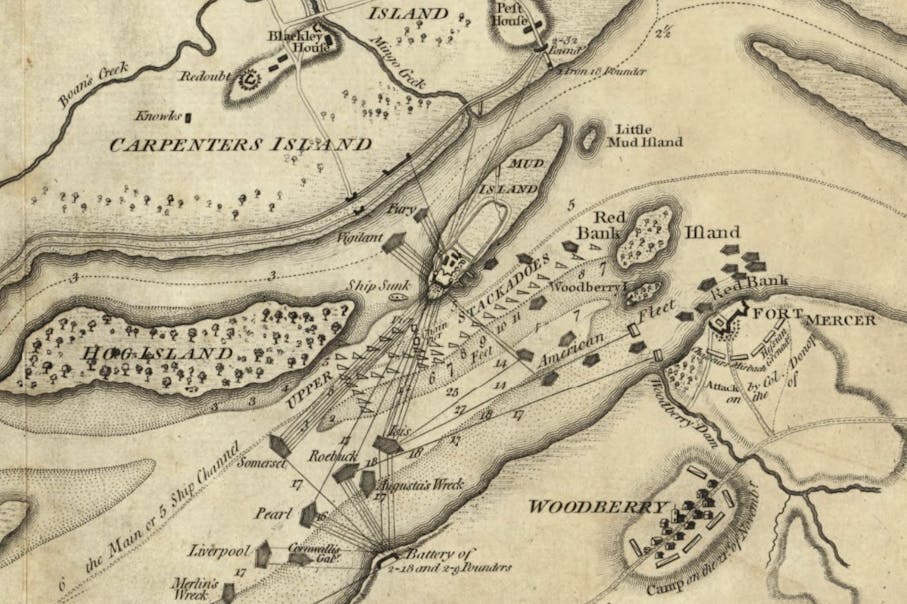

He also designed a series of underwater obstructions known as cheveaux de frise to sit in the Delaware River. Several giant, iron-tipped wooden spears would be attached to boxes weighted to sink to the river bottom, where the spears would threaten enemy ships trying to get to Philadelphia’s harbor.
Though ultimately unsuccessful in protecting Philadelphia from the British, the combination of the fortresses and river blockades were effective enough to convince British General William Howe to abandon his plans to sail up the Delaware River and instead march the 50 miles north from the Chesapeake Bay to the largest city and capital of the newly independent United States.
Kościuszko was then sent to New York to serve under General Horatio Gates, planning his defensive strategy. Kościuszko ordered the troops retreating from Fort Ticonderoga to delay the British by cutting down trees, moving boulders onto the road, and diverting and damming streams to turn the woodland path into a swamp. In the autumn of 1777, Kościuszko’s structures and use of topography contributed to the Revolutionary victory at Saratoga. This defeat of the British forces under General John Burgoyne would prove to be a turning point in the Revolutionary War.
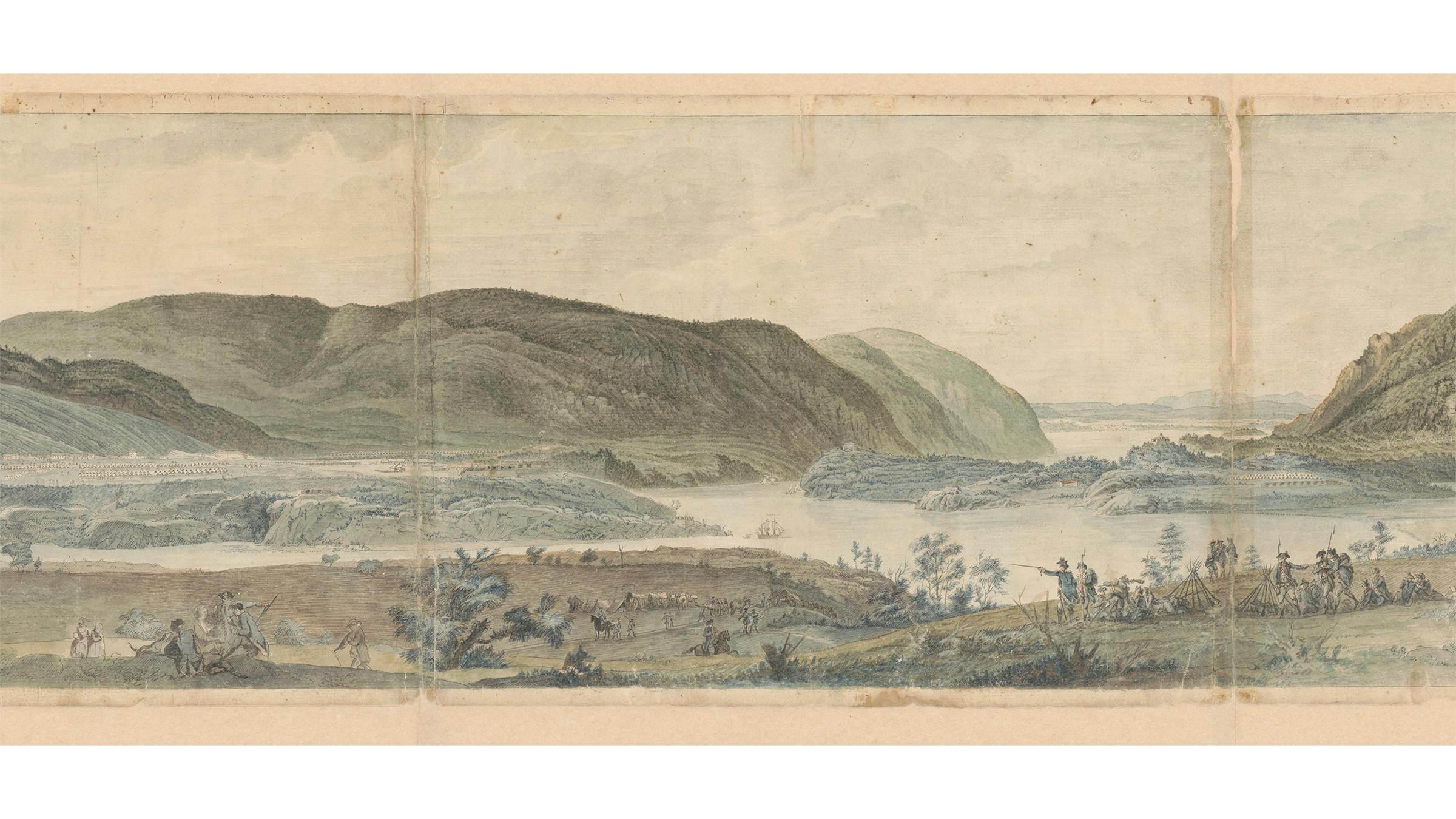
In 1778, General George Washington commissioned Kościuszko to plan the military fortifications at West Point, New York, an important defensive position on the Hudson River. He spent two years creating and strengthening the base, which would become the U.S. Military Academy’s eventual home, including designs that were roundly considered impenetrable.
While serving in New York, Thaddeus was also assigned Agrippa Hull, a Black soldier from the Connecticut regiment, as his orderly and servant. Hull and Kościuszko became close friends, forming a relationship based on mutual respect and the shared experience of battle as they traveled with Horatio Gates throughout the Southern Campaign. Kościuszko even tried to convince Hull to join him in Poland when the war ended in 1783, though Hull turned him down and instead settled in Stockbridge, Massachusetts.
Thaddeus: The Polish Hero
After nine years away from his homeland, Thaddeus Kościuszko returned to Poland in September 1784. When the Russian armies of Catherine the Great invaded Poland in 1792, Kościuszko fought a year-long war for Poland's freedom. However, the Russian military was too strong, and in late July 1792, Poland surrendered. Kościuszko left, traveling Western Europe to gather support to lead a rebellion and force the removal of Russia.
In March 1794, he returned to Poland and was chosen as Commander in Chief of the uprising, where he inspired thousands of Polish people, from soldiers to peasants, to join the rebellion. Even in the face of a Russian alliance with Prussia, this patchwork army was able to force out occupying soldiers until October, when in their final battle, Poland was defeated in Warsaw. Kościuszko was severely injured, captured, and held in St. Petersburg as a prisoner of war.
In 1796, Kościuszko was granted his release from prison upon swearing that he would never return to his native homeland. He chose to return to the United States, and in November of 1797, he took up residence on the corner of 3rd and Pine Street, just blocks from where the Museums stands today, at Mrs. Relf’s boarding house. He entertained a stream of visitors, including members of Congress, Native American leaders, and then-Vice President Thomas Jefferson, whose words in the Declaration of Independence had inspired Kościuszko 20 years earlier. They quickly formed a friendship that would last another 20 years.
Thaddeus Kościuszko in Philadelphia
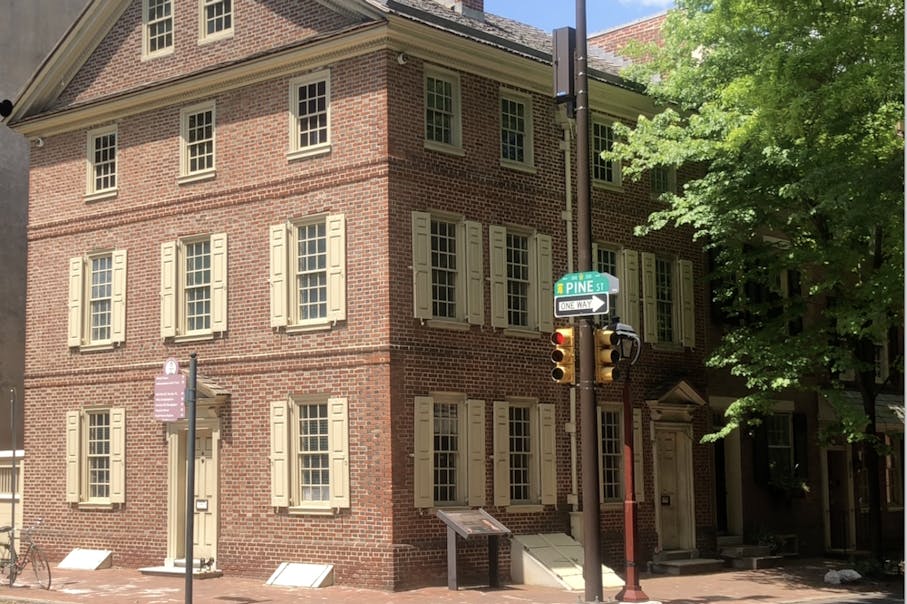
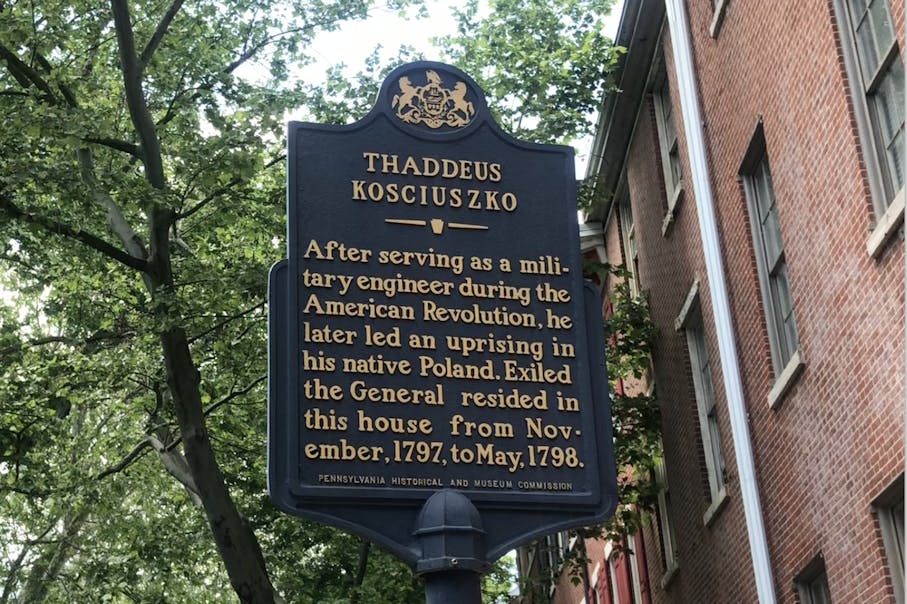
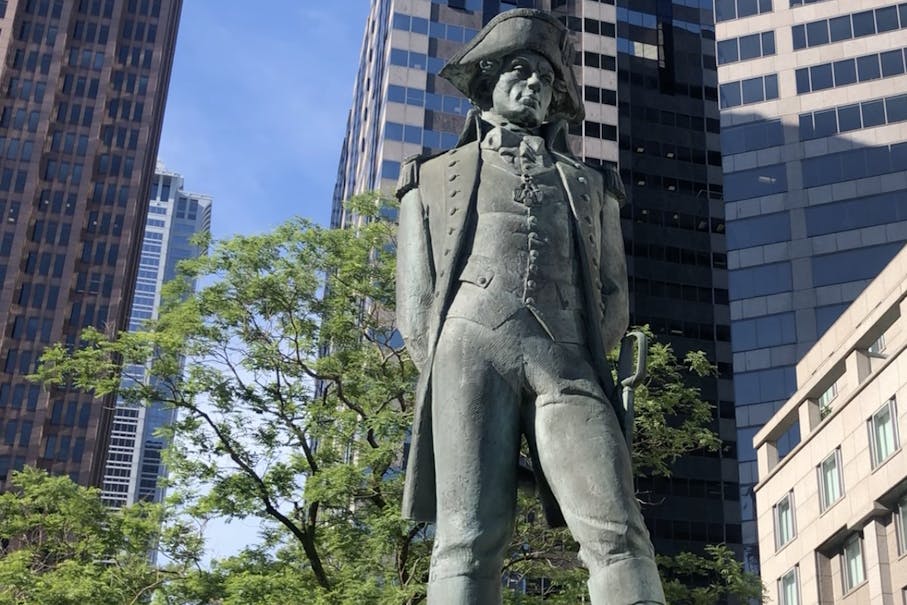
Thaddeus: The Retired Revolutionary
Kościuszko returned to Europe in 1798, to France, where Napoleon Bonaparte promised to overthrow Russia and return Poland to a free state. Kościuszko was skeptical of Bonaparte’s plans, but he met with the French emperor nonetheless in an attempt to broker the possibility of Polish independence. After Napoleon’s fall in 1814, the Congress of Vienna again returned control over Poland to Russia, an outcome Kościuszko found disappointing yet unsurprising.
Kościuszko spent the last years of his life in Switzerland, living as a tutor and writing to many of his fellow American revolutionaries, including his close friend Jefferson. He died in exile in 1817, though his body was later buried at Wawel Castle in Krakow, Poland, alongside the tombs of the Polish kings. One of his final wills ordered that Thomas Jefferson take whatever Kościuszko owned in the United States and have it sold off in order to use the money to free and educate as many enslaved people in America as possible. However, attempting to execute this will was also legally complicated and it instead stayed tied up in U.S. court systems until 1856.
Today, though Kościuszko’s contributions to the Revolutionary War may not be as well-known as others, his design and engineering directly contributed to significant victories for the Continental Army. But more importantly to both him and the United States was his knowledge and passion for Revolution’s ideals. His dedication to individual liberty and equality would lead to Jefferson calling him “as pure a son of liberty as I have ever known.”
Learn More
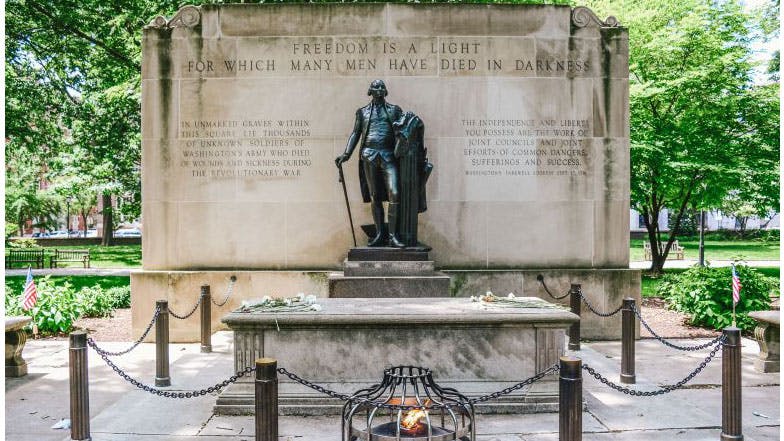
Virtually Tour the Tomb of the Unknown Revolutionary War Soldier
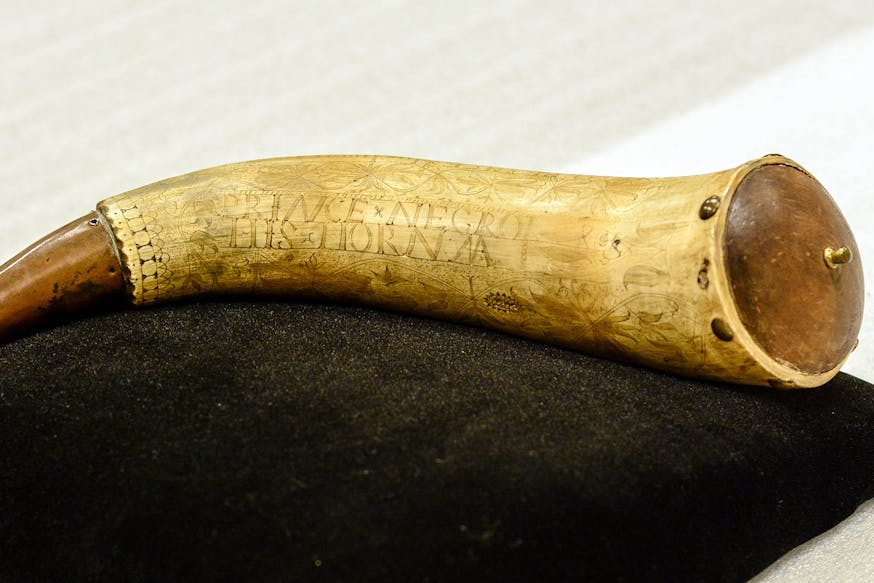
Discovering History: Memorialization at the Museum

